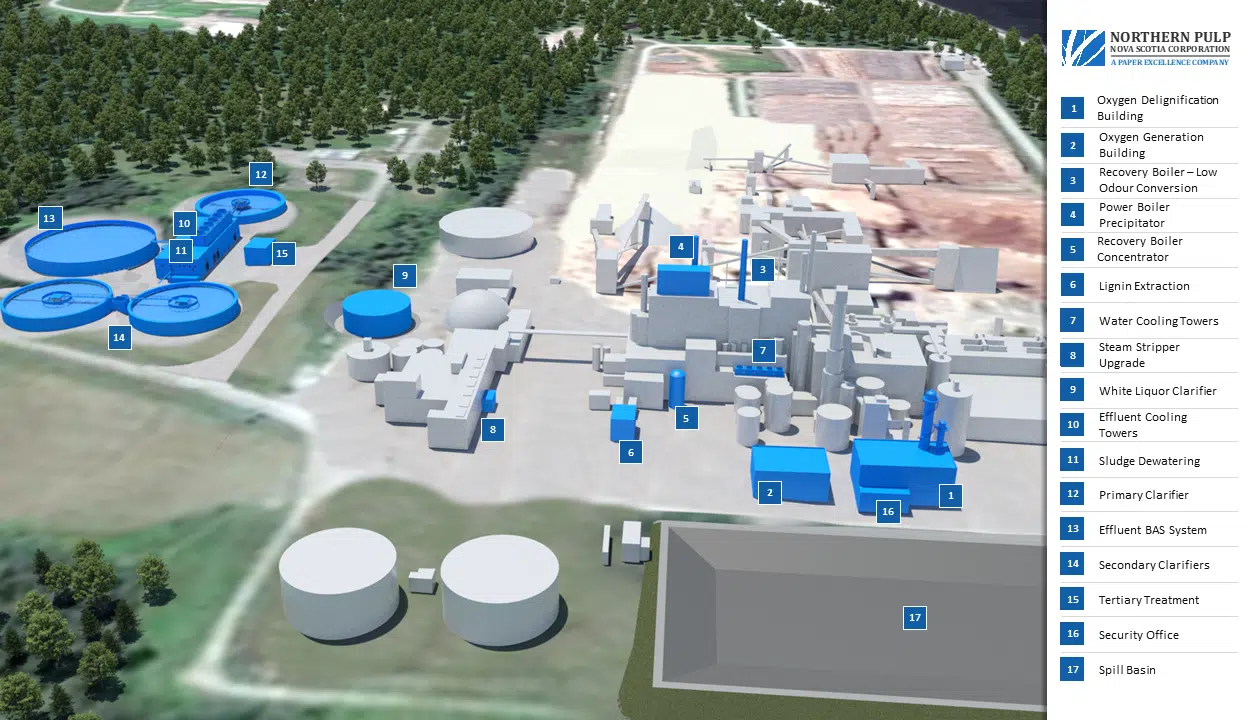A troubled pulp mill in Pictou County is proposing a “complete transformation” in an effort to reopen.
Mill Owner Paper Excellence says the more than $350 million plan will clean up the Northern Pulp Mill by reducing water usage and treated wastewater components along with a cut to greenhouse gas emissions
The plan also aims to help the mill look and smell better by lowering the plumes that are visible from its stacks and getting rid of noticeable odors during normal operations.
“Paper Excellence acknowledges community concerns and wants to work with community members to build trust, finalize a transformation plan for a clean and sustainable Mill, and develop a new relationship for the Mill and community moving forward,” said Paper Excellence Vice-President of Environment, Health, Safety and Corporate Communications Graham Kissack in a news release.
Despite these steps, the transformation plan continues to include the release of treated wastewater from the mill into Pictou Harbour.
Paper Excellence say the exact location will be determined through further environmental study and community engagement. There will be no pipeline crossing neighborhood communities.
The company has not released details on how it plans to pay for the overhaul of the mill.
The mill operated for more than six decades prior to its hibernation in January 2020 after the province banned it from dumping effluent into the Northumberland Strait, near the Pictou Landing First Nation.
The PLFN has issued an update to social media from Chief Andrea Paul, who says she has not met with anyone from the mill in quite some time. She plans to review the information next week with her council and a legal and engineering company.
Paul says she was not invited to meetings that have occurred between Northern Pulp and other mayors.
She adds consultation with the Pictou Landing First Nation is a requirement for the company under the Mi’kmaq-Nova Scotia-Canada Consultation Terms of Reference, which lays out a consultation process for the parties to follow when governments are making decisions that have the potential to adversely impact asserted Mi’kmaq Aboriginal and treaty rights.
Meantime, Environment and Climate Change Minister Keith Irving says the project requires a Class II environmental assessment process as the changes would make the mill a substantially different facility than the one that operated there before it went idle.
Such an assessment typically takes 275 days to complete, which does not include the time it takes for the company to prepare the environmental assessment report. The time allotted for that is two years.
An environmental assessment panel is appointed to review the project and to provide a report and recommendation to the minister.
The next step is for the company to register its new project for environmental assessment.
The mill has launched a website for updates and feedback on its new plan.












